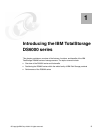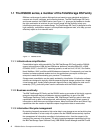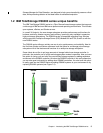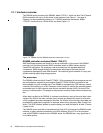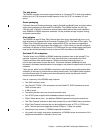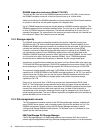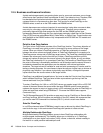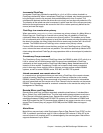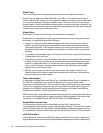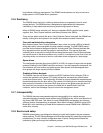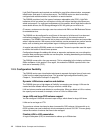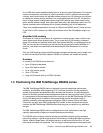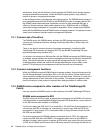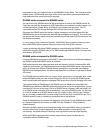
10 DS6000 Series: Concepts and Architecture
1.2.5 Business continuance functions
As data and storage capacity are growing faster year by year most customers can no longer
afford to stop their systems to back up terabytes of data, it just takes too long. Therefore, IBM
has developed fast replication techniques that can provide a point-in-time copy of the
customer’s data in a few seconds or even less. This function is called FlashCopy on the
DS6000 series, as well as on the ESS models and DS8000 series.
As data becomes more and more important for an enterprise, losing data or access to data,
even only for a few days, might be fatal for the enterprise. Therefore, many customers,
particularly those with high end systems like the ESS and the DS8000 series, have
implemented Remote Mirroring and Copy techniques previously called Peer-to-Peer Remote
Copy (PPRC) and now called Metro Mirror, Global Mirror, or Global Copy. These functions are
also available on the DS6800 and are fully interoperable with ESS 800 and 750 models and
the DS8000 series.
Point-in-time Copy feature
The Point-in-time Copy feature consists of the FlashCopy function. The primary objective of
FlashCopy is to create very quickly a point-in-time copy of a source volume on the target
volume. When you initiate a FlashCopy operation, a FlashCopy relationship is created
between the source volume and target volume. A FlashCopy relationship is a mapping of a
FlashCopy source volume and a FlashCopy target volume. The FlashCopy relationship exists
between the volume pair from the time that you initiate a FlashCopy operation until the
storage unit copies all data from the source volume to the target volume, or until you delete
the FlashCopy relationship if it is a persistent FlashCopy. The benefits of FlashCopy are that
the point-in-time copy is immediately available for use for backups and the source volume is
immediately released so that applications can be restarted, with minimal application
downtime. The target volume is available for read and write processing so it can be used for
testing or backup purposes. You can choose to leave the copy as a logical copy or choose to
physically copy the data. If you choose to physically copy the data, a background process
copies tracks from the source volume to the target volume.
FlashCopy is an additional charged feature. You have to order the Point-in-time Copy feature,
which includes FlashCopy. Then you have to follow a procedure to get the key from the
internet and install it on your DS6800.
To make a FlashCopy of a LUN or a z/OS CKD volume you need a target LUN or z/OS CKD
volume of the same size as the source within the same DS6000 system (some operating
systems also support a copy to a larger volume). z/OS customers can even do FlashCopy on
a data set level basis when using DFSMSdss™. Of course the DS6000 also supports
Concurrent Copy.
The DS Storage Manager’s GUI provides an easy way to set up FlashCopy or Remote Mirror
and Copy functions. Not all functions are available via the GUI; instead, we recommend that
you use the new DS Command-Line Interface (DS CLI), which is much more flexible.
Data Set FlashCopy
In a z/OS environment when DFSMSdss is used to copy a data set, by default FlashCopy is
used to do the copy. In this environment FlashCopy can operate at a data set level.
Multiple Relationship FlashCopy
Multiple Relationship FlashCopy allows a source to have FlashCopy relationships with
multiple targets simultaneously. This flexibility allows you to initiate up to 12 FlashCopy
relationships on a given logical unit number (LUN), volume, or data set, without needing to
first wait for or cause previous relationships to end.




